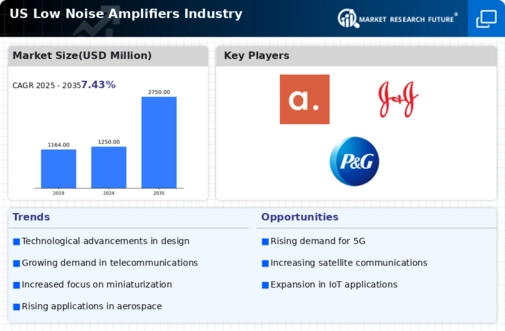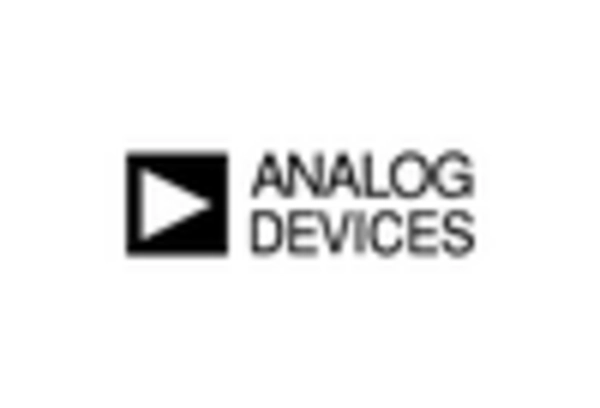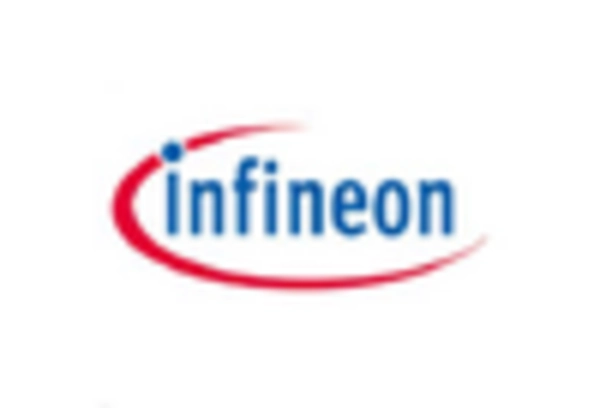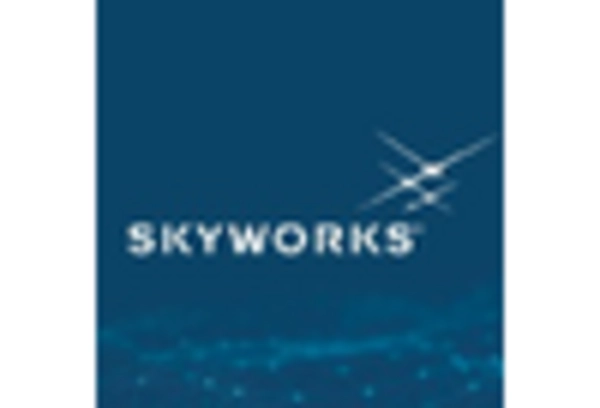Rising Adoption of 5G Technology
The ongoing rollout of 5G technology in the US is driving the low noise-amplifiers market. As telecommunications companies upgrade their infrastructure to support higher frequencies and faster data rates, the demand for low noise-amplifiers is expected to surge. These amplifiers are crucial for enhancing signal quality and minimizing noise in 5G networks. According to industry estimates, the 5G infrastructure investment in the US is projected to reach $275 billion by 2025, which will likely create substantial opportunities for low noise-amplifiers market players. The need for reliable and efficient communication systems in various sectors, including automotive and healthcare, further emphasizes the importance of these amplifiers in the evolving technological landscape.
Focus on Research and Development
Investment in research and development (R&D) within the low noise-amplifiers market is becoming increasingly critical. Companies are focusing on developing innovative products that offer improved performance and efficiency. This emphasis on R&D is driven by the need to meet the evolving demands of various industries, including telecommunications, aerospace, and healthcare. As technology advances, the low noise-amplifiers market is likely to see the introduction of new materials and designs that enhance signal processing capabilities. The US government has allocated substantial funding for technology innovation, which may further stimulate R&D efforts in this sector. This trend indicates a potential for growth and competitiveness among market players.
Growing Demand for Consumer Electronics
The consumer electronics sector in the US is evolving rapidly, leading to increased demand for low noise-amplifiers. As devices such as smartphones, tablets, and smart home systems become more sophisticated, the need for high-quality audio and video performance is paramount. Low noise-amplifiers are essential for ensuring clear sound and image quality in these devices. The consumer electronics market is expected to grow at a CAGR of 5.5% from 2025 to 2030, indicating a robust demand for components that enhance user experience. This trend suggests that manufacturers in the low noise-amplifiers market may find lucrative opportunities in partnerships with leading consumer electronics brands.
Emerging Applications in Medical Devices
The low noise-amplifiers market is witnessing growth due to the increasing integration of these components in medical devices. As healthcare technology advances, the demand for precise and reliable signal processing in diagnostic equipment is rising. Low noise-amplifiers play a critical role in enhancing the performance of imaging systems, such as MRI and ultrasound machines, where noise reduction is vital for accurate results. The US medical device market is projected to reach $208 billion by 2025, suggesting a substantial opportunity for low noise-amplifiers market participants to cater to this expanding sector. The emphasis on improving patient outcomes through advanced medical technologies further drives the need for high-quality amplifiers.
Increased Investment in Aerospace and Defense
The aerospace and defense sectors in the US are experiencing significant growth, which is positively impacting the low noise-amplifiers market. With rising defense budgets and a focus on advanced communication systems, the demand for high-performance amplifiers is likely to increase. Low noise-amplifiers are essential for radar and satellite communication systems, where signal integrity is paramount. The US defense budget for 2025 is estimated at $886 billion, indicating a robust investment in technologies that require low noise-amplifiers. This trend suggests that manufacturers in the low noise-amplifiers market may benefit from increased contracts and collaborations with defense contractors and aerospace companies.















Leave a Comment